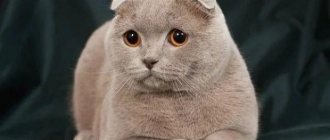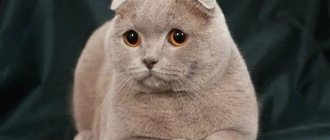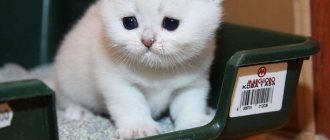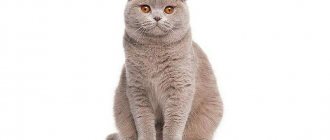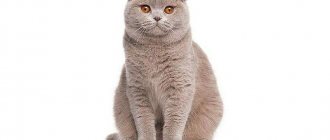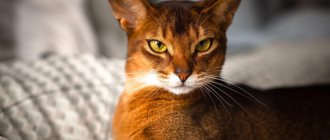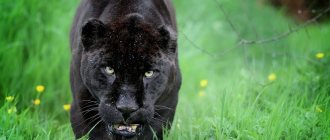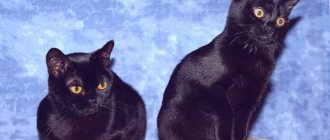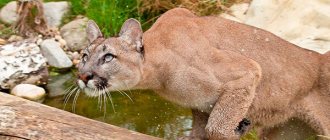The Lilac Briton was developed relatively recently as a result of experiments by breeders who were interested in the development of the breed. In the light shades of this color you can guess the blooming lavender, and the dark ones are more like the color of traditional English milk tea.
The cat with unusual fur quickly gained recognition in the international expert community. Let's find out if there is a relationship between the color of the fur coat and the character of the pet.
The history of the appearance of true British colors
The main role in the formation of new colors in cats belongs to genetics. The first cats bred without any rules, since the survival of the species was the main goal. But when the cat became a pet and settled next to a person, the situation changed dramatically.
The owners wanted to make some parameters more predictable in order to get kittens with a certain coat color.
Important! Based on the variety of registered colors (more than 200), the British cat ranks one of the first places in the hierarchy of cat breeds. The trademark is solid coat colors.
The gray-blue shade has been recognized as the main color for British Shorthair cats. The further evolution of colors began with him. The main achievements of the debut period are attributed to the English artist Harrison Weir, a great lover of British cats and a specialist who compiled the first standard of this breed.
During the selection, a line of solid colors was fixed, where, in addition to the main one (often called British), a palette of white, black, blue, cream, chocolate and red appeared. And at the end of the twentieth century, a purple tint was added to them.
Important! According to the rules of solid colors, the fur of a lilac British cat must be dyed from root to tip in one even color, without half-tone transitions.
A scandal broke out at the exhibition. The cat owner dreamed of participating in the Best-in-Show and suddenly... a complete failure: the judge transferred his pet to class 13X. What does it mean? Expert Irina Kharchenko answers this and many other questions. — What explains the presence of characteristic, very special colors in cats of a number of breeds?
— Archaeological excavations and other types of scientific research have led to the emergence of several hypotheses about the origin of this or that cat breed. In accordance with this, the color of the animal is considered as an integral part of the exterior. For example, there is a version of the origin of Persian cats from Turkish Angoras; according to other sources, their ancestors lived in the mountains of ancient Armenia. Moreover, felinologists suspect the wild Pallas cat not only of the origin of the Persian breed, but also of transmitting its cream color.
Different continents, different wild animals stand at the origins of domestic animals. Hence the colors inherent in cat breeds. The history of the emergence of the spotted-colored Egyptian Mau and Ocicat, a new American breed obtained from crossing domestic cats with wild ones, can be traced quite clearly. The Ocicat is such a wildly graceful creature that it is difficult to imagine it at home.
— Some breeds have many colors, while others have only one. Can color be considered a breed characteristic in this case?
— It is impossible to definitely name color as a breed characteristic. It can be noted that in this breed there are animals of only one color, and even then with a reservation. Maybe five years ago there was one color, but today it seems to be the same color, but with variations. For example, Turkish vans. Previously, only red animals were described in the standard, the rest were disqualified. Today cream ones are already allowed. A similar situation, although controversial, is with the Russian Blue. By basic world standards, these cats exist in one color, but some felinological organizations in Europe recognize that there are Russian Blues in black and white versions. White Russian blue or black Russian blue sounds a little funny, but nevertheless it is so. If we consider the FIFe standard as a reference, then we can say that blue color is a breed trait. But there are very few such cat breeds.
— Which breeds, on the contrary, are characterized by a wide range of colors?
— The largest number of colors is found in cats of popular, ancient breeds: Persian, European shorthair, British. By the way, all colors are repeated in the Siamese version: blue is blue point, black is seal point, etc., but the marks are visible only on the ears, muzzle, limbs and tail.
According to the CFA system, today there are about 280-300 colors of Persian cats, but the richest range is found in Maine Coons, Norwegian Forest cats and Rex cats. If the Persians are considered in six groups; solid colors, particolors*, bicolors and tricolors, cameo and smoke, silver chinchilla group and color points, then Maine Coons, Norwegian Forest and Rex have the right to agouti - a color that, in combination with white, gives an insane number of options,
(* Particolor - a group of particolors includes varieties of tortoiseshell color)
As for ancient breeds, felinologists adhere to conservative positions and prefer pure colors. If, as a result of incorrect crossing (color point to bicolor, cream cameo to red marbled, chinchillas to silver marbled cats), a non-standard color is revealed, then the cat should be transferred to class 13X. This means that the cat has a so-called unrecognized color.
— Is there such a thing as the value of color, and what role does color purity play?
— For Persians, the type comes first, the quality of the coat comes second, and only then the color. Therefore, the cat with the best head type will be the first at the exhibition, but if her color has let down, then the overall score, of course, decreases. Competition is higher where the breed has only one color accepted as a standard, for example, Russian Blues, Korats or Turkish Angoras. What matters here is the tone, how silvery the coat is, etc.
— What colors of cats are considered to be the main ones?
If we speak in normal language and do not use special terminology, then the entire range is based on white, black, red, blue, cream and tortoiseshell colors. There are weakened colors. For black it is chocolate and blue. With the participation of both weakened genes - purple, etc. In addition, there are various color transformations in the form of tortoiseshell cats in different shades. The entire further range is built on the basic colors, which are intertwined in the most bizarre combinations. — I noticed that you often say ginger cat, and not red, as is customary among domestic breeders.
“All my life I’ve been calling them redheads, being narrowly in opposition to other clubs.” Our felinologists don’t like the word red - it’s too simple. We always want to complicate what is generally quite simple and obvious.
We can’t say: the color is tortoiseshell and white, but it must be tortoiseshell on a white lining. The term stop is translated as saddle. The shaded cameo has become a shaded cameo with or without a veil. For what? When there are already special English terms that are accepted in all countries, and they sound good. If you do translation, then sometimes from one short word several words grow, completely incomprehensible to a normal person.
— What is the difference between a Persian cat with a shell color and a cat with a shaded color?
— The difference between the shell and shaded colors is as follows: in the cameo shell the end of the spine is colored by 1/8, and in the cameo shell it is 1/3 shaded. Thus, shaded is slightly darker, and shell is the lightest of the cameo group.
In chinchillas (group 10), the end of the spine is also 1/8 colored and can be designated as black cameo. Another thing is that the breed transformed from a cameo with yellow eyes to a cameo with green eyes. Therefore, group 10 combines almost white cats with a barely visible dark veil.
— What recommendations can be given for crossing Persian cats to avoid obvious mistakes?
— There is a general rule that allows you to cross cats within each group: cameo, solid (solid color group), chinchillas, color-points, etc. Crossings between groups can also be carried out, but this must be approached with extreme caution so as not to achieve the opposite result and not deteriorate the breed. For example, a breeder breeds two cats: one with cameo color, the other black. For what? It turns out, oddly enough, if you constantly work in the cameo group, then the main feature disappears - the contrast between the light white-silver undercoat and the darker ends of the guard hairs is lost. To increase the contrast, at a certain stage a solid color is added, which, with its purity, will give a clearly distinguishable typing** in future generations. The solid color can be any color, but it is necessary to study the color pedigree if you want improvement in a particular trait. Most felinologists in this particular case use strong colors: black and red, less often blue.
(**Typing - white-silver undercoat combined with colored ends of the guard hairs)
— What genetic possibilities exist for improving color?
— There are plenty of options for improving color, and not least of all is crossing with animals of the main color. For example, a cream cameo cat, which does not have very clear typing, is bred with a cameo cat, with clear typing and good color reproduction (the usual method of improvement), or with a blue or black cat. Half of the offspring will be a solid color - they will take after the father, and half will be a cameo, like the mother.
- Some breeders, I know, cross animals of black and white solid colors in the hope of getting a two-color porridge - bicolor.
From such marriages bicolors are born, but only if the white partner is bicolor. Bicolors are born from bicolors. To obtain this color, you need to cross white animals for several generations to get a cat with a white spot. Then backcross to white until the white accumulates and you get a two-color animal.
There is a special term - white accumulation. The work on obtaining bicolor animals has been done a long time ago, and today to obtain a cat with this color it is enough for one of the parents to have it. Bicolor is rare, but can be obtained from parents with a solid color, but then they must have such animals in the underground***.
(*** Underground - meaning the gene pool of the ancestors)
— Why are some owners afraid of white color?
| Cat x Cat | Kitten coat color | ||
| Cats | Cats | ||
| 1-black | 1 - black | 1, 3 | 1, 3 |
| 3 - blue | 1, 3 | 1, 3 | |
| 4 - red | 4, 5 | 11, 13 | |
| 5 - cream | 4, 5 | 11, 13 | |
| 11 - tortoiseshell | 1, 3, 4 , 5 | 1, 3, 11, 13 | |
| 13 - blue-cream | 1, 3 , 4 , 5 | 1, 3, 11, 13 | |
| 3 - blue | 1 - black | 1, 3 | 1, 3 |
| 3 - blue | 3 | 3 | |
| 4 - red | 4, 5 | 11, 13 | |
| 5 - cream | 5 | 13 | |
| 11 - tortoiseshell | 1, 3, 4, 5 | 1, 3, 11, 13 | |
| 13 - blue-cream | 3, 5 | 3, 13 | |
| 4 - red | 1 - black | 1, 3 | 11, 13 |
| 3 - blue | 1, 3 | 11, 13 | |
| 4 - red | 4, 5 | 4, 5 | |
| 5 - cream | 4, 5 | 4, 5 | |
| 11 - tortoiseshell | 1, 3, 4 ,5 | 4, 5, 11, 13 | |
| 13 - blue-cream | 1, 3, 4, 5 | 4, 5 , 11, 13 | |
| 5 - cream | 1 - black | 1, 3 | 11, 13 |
| 3 - blue | 3 | 13 | |
| 4 - red | 4, 5 | 4, 5 | |
| 5 - cream | 5 | 5 | |
| 11 - tortoiseshell | 1, 3, 4 , 5 | 4, 5, 11, 13 | |
| 13 - blue-cream | 3, 5 | 5, 13 | |
— The white color is generally very complex, cunning and interesting. A white kitten is obtained if at least one of the parents is white. Moreover, if we breed a black cat with a white cat, then half of the litter will be white, and half will be colored. Statistically, of course. Moreover, the colored ones will be colored in accordance with the mother’s pedigree. The white cat seems to hide its colored appearance under a white mask. In fact, she is of one solid color - either black, or blue, or red... This can only be revealed by crossing her one by one with cats of certain colors. Let's say that by crossing her for the first time with a blue cat, the second time with a red one, the third time with a black one, we will establish what kind of soul she has, what color. If the mother is colored and the father is white, then all of the above remains in force, but applies to the cat.
— If you cross endlessly, what color will the cat end up with?
- White. This color is dominant. Although it is difficult to talk about dominance. It is known, let's say, that the solid colors black and red are the main ones, all the others are derivatives of them. Professional breeders gravitate towards type, while amateurs gravitate towards light colors: cream, blue, silver.
There were breeders who were ready to give half their lives for an animal of a rare color (chocolate or lilac), but at the last moment common sense prevails, since when the color is weakened, the type goes away. A beautiful and rare color will not replace a head that is far from perfect.
— Do you often see cats with unrecognized colors at shows?
— It all depends on the expert’s mood. A less benevolent judge, in order not to upset the owner, will give a good rating, remembering that this in any case does not allow participation in breeding and producing vicious offspring. In the worst case, disqualification occurs. And the best option is when the cat is transferred to the PERx class. This is how an unrecognized color is designated (previously it was designated 13X). Let's say you are the happy owner of a black Persian cat with a white medallion on the chest (this color is not in the standard), and I, as an expert, will transfer it to the PERx class or give it a good rating, or disqualify it. A cat in the PERx class is disadvantaged only at an exhibition, since it receives a rating without a place, but it can be recommended for breeding.
— How many colors are recognized as the standard today?
— The Persians have about 300, and there are still some that are not recognized. For example, agouti, whitened, when the cat has a white chest or in so-called socks, stockings. All these colors are a defect for a Persian cat, but for, say, a Cornish Rex they are normal.
Bicolor color is when at least one third of the body is painted white and, accordingly, two thirds are colored: black, red, cream, etc. Next comes "harlequin". In this color, the colored spots make up a maximum of one sixth and are placed in a certain way. They must be on the head, two or three spots on the back and front legs, colored hind legs and a colored tail are allowed. The next step, an almost white cat, is the Van. Vans came from harlequins as the latter accumulated white color. The name of the color, as you might guess, comes from the Turkish Van. Only in classic Turkish cats the colored cap on the head is divided by a white blaze, while in Persians this is rare, but they are forgiven. Two or three spots on the back are allowed (preferably their complete absence) and a colored tail. Thus, a cat with colored ears and a tail is called a van.
— Where do cats with unrecognized colors come from and how to avoid mistakes in breeding?
— There is no universal recipe. Our club has adopted a form of advisory breeding, and there are courses for felinologists. It is better for beginning lovers not to get into the wilds of felinology: breed solid-colored and color-point cats, chinchillas and cameos, and engage in inbreeding. It is better to breed cats in your own group: solid color on solid, cameo on camso, color point on color point. This is a win-win, sustainable option. Over time, when you gain experience, you can go further: try to improve the cat’s phenotype or individual aspects of the exterior, including color, using special breeding methods for pairing.
— What kind of crossbreeding of cats is completely unacceptable?
— This question cannot be answered unambiguously. In my opinion, any options are acceptable, but it must be justified somehow. Until recently, silver marbled animals were crossed with chinchillas, but this was due to the small number of cats from both groups. The result was a chinchilla with a defective pattern, which excluded the cat from both the ranks of chinchillas (tenth group) and silver merles (seventh group). Now that there are enough purebreds, such matings cannot be carried out, and it is simply stupid. In this case, I justify the Hungarians who started with this, although we ourselves have already been burned by animals whose ratings were reduced and the owners had to cry. Of course, you cannot breed chinchillas and color-point dogs, arguing that this is what the Poles did in 1985.
Mating smoky cats and bicolor cats is difficult. According to the classical European system, marriage is resolved in 90% of cases. FIFe does not recognize cameo bicolors, but the WCF standard, on the contrary, recognizes bicolors with a smoky base tone. Therefore, if your kitten is in the WCF system, everything is fine, but then you should not appear with it at FIFe or CFA shows.
— What happens from the connection between colorpoint and chinchilla?
“For example, the cat might turn out to be black up to the waist, and then smoky, or one eye will be blue and the other green.” It is also possible for the offspring to have a solid color if you cross, for example, with a black bicolor, but in this case there may be a color point with white fingers or a medallion, or, again, difference of eyes (which in both cases is a disqualifying defect in color points).
But more often the defect manifests itself in color. It should be borne in mind that the chinchilla is essentially a black cat (although it looks quite snow-white)
— Chinchillas have remained one of the most popular varieties of Persian cats for many years. How many colors in this subgroup are allowed by the standard today?
— Like cats of solid color, chinchillas have ten subcolors: black, blue, lilac, chocolate. A red or cream chinchilla is called a cameo. Next comes tortoiseshell, blue-cream and so on. Most colors are theoretical. For example, I have never seen a purple turtle among chinchillas and I can only guess what it looks like.
— What mistakes do breeders most often make during breeding?
— The simplest thing is to select animals of the same, but not related color. This is already difficult enough. It is better not to cross a cream cat with a ginger cat. Most likely, it would be a mistake to marry a cream cameo cat with a red merle cat. The weakened red gene plays a role here. His variations on the theme of walking, shaded, plus combinations of patterns give amazing results. The fact is that mating cream and red animals is fraught with the fact that cream kittens turn out dark and it is difficult to determine whether they are dark cream or light red. By the way, red kittens from such matings suffer from weak color intensity. A cream kitten may have a red coat, and this is a lack of purity of color. All this does not mean that such animals cannot be bred at all. It is possible if a specific goal is being pursued: some kind of special inbreeding, obtaining the type of an unusual sire, reducing the size of the ears, body, etc. I would not recommend such experiments to amateurs.
— Usually, owners of purebred animals have problems choosing a cat. What color can be considered the most harmless in this case?
— White color comes first in terms of versatility. If you have a Himalayan cat, you can breed it with a white cat if there is no suitable partner from the subgroup. If the cat is bicolor, the same thing. White color will not allow PERx to go into the unrecognized, unidentified area. Thus, a white animal is the most harmless option. Although certain difficulties may arise, with the same difference of eyes, typing disorders in chinchillas, but nevertheless...
The second most universal color is black and black and white. So to speak, according to the degree of harmlessness. Black and white, again with reservations. You can breed with cats of a solid color, with a pattern without sophistication and recessive traits - typing, ticking and, especially, colorpointing (acronelism)!
Chinchillas are a completely separate group. What matters here is the purity of the color and the green color of the eyes - in general, there is enough trouble. Poor breeders are caught between three lights: color, eye color, type. Stupid group: if you achieve the color of your eyes, your nose will come out, if you remove your nose, a yellow rim will appear on the iris of your eye, etc.
— What options are available in practice? For example, when crossing a tortoiseshell cat with a white cat, can you get a tricolor? Do any funny things happen?
- Actually, there are funny cases. Moscow breeder Oleg Smolenchuk has a magnificent black-smoky cat, who was born from a white cat and a cream mother. What do well-wishers and “experts” say? The cat has a fake pedigree. If a thinking person, he will look at the pedigree of the cat’s parents and it will become clear how such a split occurred. In this case, the kitten's grandfather was black and smoky in color.
— How do professional breeders organize their work?
— Most specialize in one color range: only solid colors or only smokey, but there are also universal nurseries. A blue cat and a calico cat can potentially produce kittens of eight colors. There will be bicolors and solids, possible harlequins, etc. In this case, the nursery advertises the diversity of offspring. The greatest variety is provided by tortoiseshells and blue-cream animals, as can be seen from the compatibility table.
— In what case is it considered that a cat has a good color?
- Everyone has shortcomings. The white color usually causes colored spots on the head, between the ears, but at the age of 8-9 months they go away during the first molt. Inexperienced breeders sometimes even drown kittens in panic.
The blue color suffers from residual marble, although it is rarely noticeable. But if you wish, you can always see dark gray stripes on a light background, rings on the limbs and tail. A classic animal should be without overcoloring - differences between the dorsal stripe and the color of the fur on the belly, as well as between the shade of the guard and the undercoat.
The redhead also suffers from residual marble, the letter M on the head, and streaks on the sides. Therefore, when breeding, it is necessary to avoid animals that have marbled ancestors in their family. Or, on the contrary, enhancing the marble pattern, they look for cats with the corresponding pedigree.
In addition, a characteristic disadvantage of cream-colored animals is their dark color, while for red animals, on the contrary, they have low intensity.
Tortoiseshell cats, due to the presence of both colors, can have all of the above disadvantages. True, this is not as noticeable as in animals of solid color.
For particolors, the main thing (since there are two colors) is the placement of spots, the beauty of their arrangement. Spots of various colors should be on all parts of the body. It often happens that cats have a lot of blue, or a little cream, or the cat is blackened. In our country, darkened “turtles” are more common. At one time, there was an opinion among breeders that it was preferable to have a tortoiseshell cat with a predominance of red color. But this is also bad. Ideal - 50 to 50. Although visually I like red turtles more. They are more effective.
It’s hard to talk about chocolate and purple ones. These cats are for lovers of exotics, but for a professional it is better to have a cool white cat, of which there are millions, than the only one, but weak in appearance, a lilac one.
V. Rumyantsev talked with Irina Kharchenko
Types and standard of lilac color
There is no such thing as monotony in nature, and the lilac color of the British is proof of this. It exists in three versions:
- Lavender light shade – close to the cold silver color of the metal.
- Warm cream lilac is the most common color.
- Dark Isabella – rich coffee with cream.
The alleles (types) of two genes are responsible for the process of coloring lilac British cats:
- Black color in cats is represented by the variants B (black), bb (chocolate) and blbl (cinnamon, cinnamon).
- Saturation depends on the lightening gene D, which exists in the combination dd (there is lightening) or Dm (caramel).
The aa (non-agouti) locus is required for solid colors. It is responsible for the lack of tabby pattern on the coat.
The color tone of British lilac kittens depends on the hereditary instructions that are passed on to babies from their parents. Breeding programs do not recommend mating with two partners with shades of lilac.
This leads to a deterioration in color - kittens are born with a dirty gray coat. Therefore, for mating with lilac, ginger cats (males) are usually taken.
British genetics have already identified patterns that can be used to predict the color of kittens in a litter.
- A lilac cat and a red cat give birth to lilac boys and lilac-cream girls.
- From the lilac cat and the red British cat you can only expect lilac and cream babies.
- But lilac kittens are never born from a ginger (red) couple.
In addition to the continuous cover, the lilac color appears in various combinations with other types of color.
- Tortoiseshell, where purple is a modification of black.
- Bicolor - lilac and white, rarely found in British cats.
- Smoky shades, when the root part of the hair is weakly colored or remains white, and the pigment only works on the ends of the hairs.
- Acromelanic color point - a lilac mask of varying saturation on the face and body parts: ears, paws, tail.
- Tabby is a purple coat pattern that sometimes fades into darker colors.
The lilac color in the British cat occurs in approximately 15-20% of matings, but solid colors are not common - they predominate in targeted breeding.
This is interesting! Over the century and a half of its existence, British cats have conceded the palm to other breeds several times. But since the beginning of the 21st century they have come back into fashion and become the most widespread group in England.
Bicolors and tortoiseshells with white
A combination of the main color (solid, tortoiseshell) with white. The colored part must be clearly demarcated from white, must not have white hairs and must be at least 1/3 and not more than 1/2 white. One of the ears must be colored, preferably a large colored spot on the head. The tail may have a white tip. Small white spots on the back and colored spots on the legs are acceptable (provided the degree of coloring is generally observed).
Common to bicolor and tricolor colors: the nose mirror is, respectively, black and/or pink, chocolate and/and pink, blue and/and pink, faded lilac and/and pink.
Harlequin
Wang
Intermediate color between bicolor and van. One spot on the head is enough to cover the ear. Several spots on the back, preferably a fully colored tail, small spots on the legs are allowed. Eyes orange or copper. Nose leather and paw pads pink
General appearance of the breed and its changes since the beginning of breeding
The appearance of the British cat changed depending on the celphelinologists and breeders. To understand what this cat was like at the very beginning of its pedigree, you can turn to the work of the artist Harrison Weir, discussed above. He was a great animal lover, participated in many clubs and often depicted pets in his paintings.
The first images show a medium-sized cat, in a solid gray-blue color or bicolor (white with dark accents). At the end of the 19th century, the British still had long hair, which they obtained as a result of crossing with other breeds.
Later, work was carried out to consolidate individual characteristics. Breeders paid attention to the color and quality of the coat. As a result, the British cat's fur coat became like a thin plush with a stable gray-blue color.
During the First World War, purebred animals became a rarity. Long-haired Persians and other exotic breeds came into fashion, and the descendants of local rural cats faded into the background.
To save the native species, breeders even crossed the British with the French Chartreuse-Carthusian breed, which were not genetic relatives, but were very similar in appearance to their English counterparts.
Somewhat later, the descendants of mixed “marriages” with Persians were identified as a separate long-haired breed, and by 1970 the true British formed the type of cat that exists today.
- The cat is medium-sized, squat, with a well-developed chest.
- The head is rounded, with large cheeks.
- Wide set ears.
- Large round copper-orange eyes. Depending on the color, their color may vary.
- The cat's tail is of medium length, wide at the base and rounded at the tip.
- Short (relative to the body) legs, full rounded paws.
- The coat is dense, thick, and short.
For British cats, more than 200 types of colors are allowed, including new colors - silver, gold, lilac.
Do external factors affect the preservation of coat color?
All possible types of color transformations are subject to five rules:
- Age-related – in cats, children’s fur changes color towards puberty. The process of changing shades occurs in two directions: from light to dark and vice versa. Sometimes in the early period small spots may appear on solid colors, but later they disappear. The British lilac cat is prone to such changes in external characteristics.
- Weather - under the influence of ultraviolet radiation, the color of the coat becomes less saturated. Isabella lilac is quite capable of temporarily turning into lilac, but if you reduce the Briton’s exposure to the sun’s rays, the color will return to its original state. In the case of the lilac color-point, high ambient temperatures cause the mask on the cat's face and paws to darken, while lower temperatures cause the color to lighten to lavender.
- Age – as a lilac cat gets older, its color will definitely change.
- Diseases - British cats are not prone to hereditary diseases that can affect the color of their coat. However, even a common cold and taking medications will temporarily change the coat color of a lilac Briton.
- Poor nutrition is the most common cause of artificial influence on color. Sometimes a cat's diet affects the appearance of its fur so much that returning it to its original state takes too much time, effort and money.
Over the years of its life, the British lilac cat goes through several stages of color change. You need to carefully monitor such processes and, as far as possible, try to preserve the rare shade by all known means.
Character and behavior of shorthaired lilac British
The influence of coat color on the behavior of an animal has not been studied enough, but some practical observations are known that allow us to draw conclusions about the presence of such connections. White cats, as a rule, are docile, and black cats are obstinate, striped tabbies tend to hunt wildly, and color-point cats are secretive and even treacherous.
The character of lilac cats is within the behavioral instincts of their breed, but leans towards a more loyal view of owners and family members. Typical British Shorthairs are reserved and often seek solitude.
Cats show indifference to other pets, and in case of conflict they prefer to retire to a safe place.
Against the general psychological background of their breed, lilac-colored Britons demonstrate more softness and even delicacy. The nature of these cats does not have the habit of active games, but the lilac ones are ready to take part in general fun and can even sit for a short time in the arms of the owner.
In popular culture
See also: Fictional cats
In the United Kingdom, the tuxedo cat came to be depicted as the "Jellicle cat" in the fictional tribe of nocturnal black and white cats described by T. S. Eliot in Possum's Book of Old Cats
, which was first published in 1939.[11]
In its derivative musical, Cats
, the tuxedo cat personifies the magical Mr. Mistoffelees, who is portrayed as a stage magician wearing a lace ruff and bow tie, as well as the character Bustopher Jones whose outfit consists of a tuxedo and a brawl.
The musical differed from the book in that the characters included cats with different coat colors rather than just two-colored cats, but it retains the repeated statement that "Jellicle cats are black and white." Cats with these markings also played a major role in the drawings illustrating Real Cat
, a book written by Terry Pratchett with cartoons by Gray Jolliffe.[12]
Other famous cartoon bicolor cats include: Sylvester the Cat, Felix the Cat, Tom and Jerry
, Oggy from Oggy and the Cockroaches , Puss from Puss Who Hates People and the Cat Ventriloquist , Krazy Kat , [13] Jess from
Postman Pat
, Kitty Softpaw from
Shrek
Extra Benefit
Puss in Boots
, Figaro the Beans and Sebastian the Cat from
Josie and the Pussycats
.
A bicolor cat named Mittens is one of the main characters in the 2008 Disney animated film. Bolt
.
Aldwyn is from Familiars
Tuxedo Cat, and Meowris (voiced by Paul Frees) is from
Gay Purr
Bicolor.
The Tuxedo Cat is also the main character of a popular children's book. Tip-Top Cat
, and another one is one of the three cat breeds in the video game.
Mine craft
.
Morgana, playable character in JRPG. Persona 5
is a two-color cat.
Bo, a character from the Abby Hatcher
, is Fluffy, who resembles a tuxedo cat.
Proper care and feeding
The British lilac cat is easy to care for, and its maintenance does not take much time.
Hygiene
Once a week it is necessary to comb the cat’s fur, and during active shedding, the procedure is repeated 2-3 times a week or even daily. A special mitten or standard combs work well with short lilac hair.
The British do not like water, so instead of bathing, you can treat the coat with a damp cloth. Lilac British cats are taught hygiene from an early age.
You also need to regularly remove the discharge that forms in the corners of the eyes and around the nose. Treating the ears of straight-eared Britons is not a problem. Use a cotton swab to remove dirt from the upper part of the ear, and the ear canal is cleaned with special drops or lotion.
Diet
The basis of the cat's menu (up to 90% of daily intake) is meat and fish. The diet must include vegetables, cereals, yeast and cottage cheese (milk). Adult British cats with lilac coloring are often given balanced industrial food, which contains the required amount of fats, carbohydrates, vitamins and microelements.
Sometimes the composition of the products has a negative effect on wool with a lilac color. For example, iodine, which is found in seafood, can change a cat's fur to a purple color, which is unusual for the British. Therefore, when changing food, you need to monitor the condition of your pet’s coat and adjust the diet in case of unexpected color changes.
Upbringing
Breeders believe that the lilac color of British cats affects their character. Such pets demonstrate an increased level of learning ability. Unlike blue-gray Britons, they love communication.
Lilac cats enjoy being the center of attention, as long as they choose to do so. A cat that gets into a large family at an early age shows less independence and independence, which is characteristic of the British breed.
Choosing a nickname for the handsome lilac
When choosing a cat name, the designation of lilac color is always a priority. Although in this matter professional breeders prefer to adhere to their own rules. The names of all pets in the litter begin with a certain letter and often contain the brand name of the nursery or a combination of the parents' names.
Therefore, the little lilac Briton goes to a new owner with a name that is already recorded in the pedigree documents.
However, the owner can give the pet another “unofficial” nickname, which he will respond to at home.
- Dark purple British cats are sometimes called Isabella and derivatives of this name. This is a tribute to the isabella color, the second name for the color.
- Often there are names starting with the letter “L” - Lilu, Lyalya, Laska, Lavender.
- The nicknames traditionally include a reference to the English pedigree roots of this breed - London, Albina (apparently they mean Albion), York and even Westminster.
- For some time, aristocratic titles were in fashion - Count, Duke, Queen Margot (although this is closer to France, it is quite common in the pedigrees of British cats).
English cats have a complex character, but this in no way affects the persistent desire of fans of the breed to have just such an animal. The appearance of a new color in a group always causes a fresh wave of interest, and the lilac color is still among the rare and most sought after.
The only difficulty is the need to find a conscientious breeder, but such little things never stop true connoisseurs of cat beauty.
Breeding bicolor cats
Breeding two-color cats is a very complex matter that requires the breeder to have a lot of experience, no less knowledge and solid skill.
Even breeders with ideal colors may produce kittens of other colors. Just trying to ensure that all the kittens are two-colored will require a lot of effort, and in order for the entire litter to be of equal value, it will require skill on the verge of virtuosity. At the same time, all breeders working in this direction unanimously claim that this is an extremely exciting activity. They are especially fascinated by their attempt to achieve a symmetrical pattern in bicolor kittens, which is incredibly difficult to implement in practice. It is for this reason that kittens and cats with this pattern are very rare and very expensive.
In most cases, the typical bicolor cat is born from the mating of a bicolor cat and a calico tortoiseshell cat. The second common option is when both parents are two-colored. Different combinations of sire colors can produce up to seventeen different color variations in kittens. Perhaps it is for this reason that breeding kittens of this color is becoming increasingly popular among breeders around the world, becoming more and more interesting from their point of view.
If you find an error, please select a piece of text and press Ctrl+Enter.
